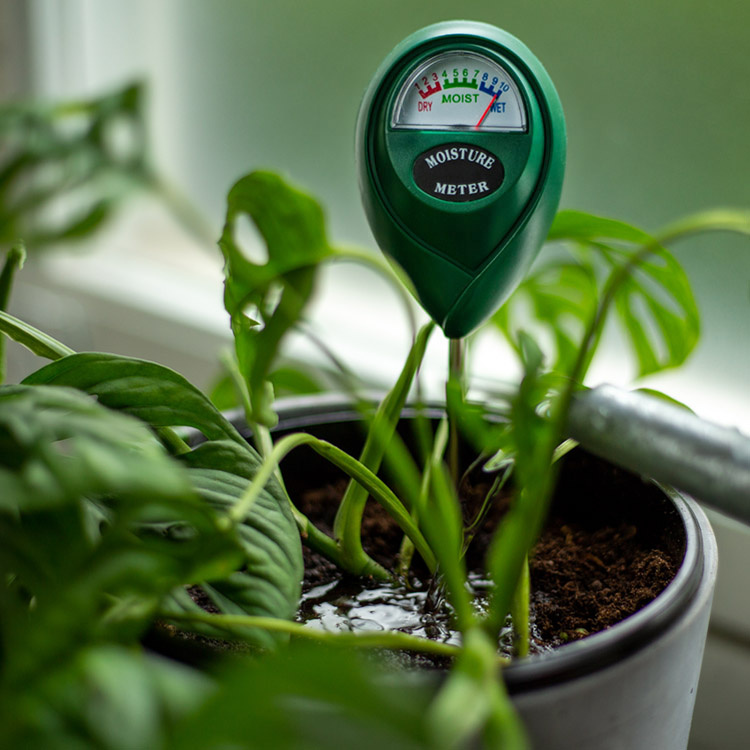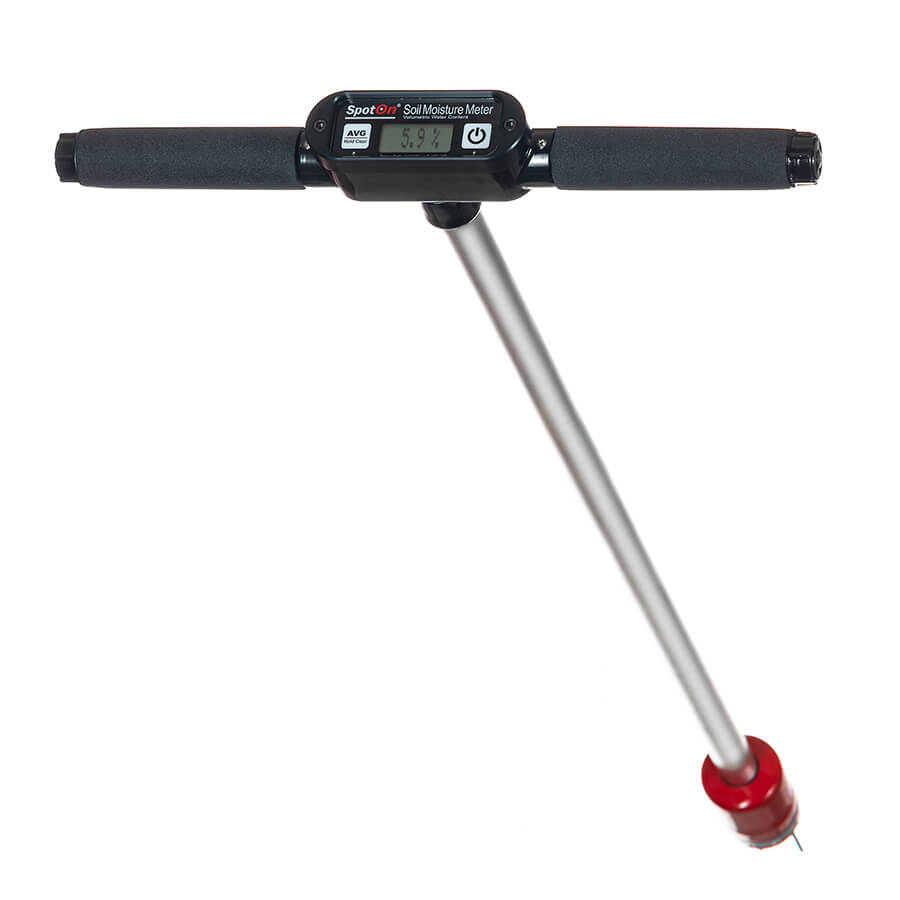Delve Into the World of Moisture Meters: Everything You Need to Know
In the realm of dampness meters lies a world of accuracy and practicality that frequently goes unnoticed. Recognizing how moisture meters run, the different kinds offered, and their diverse usages can drop light on their significance in guaranteeing top quality and effectiveness.
How Dampness Meters Work
Dampness meters operate by gauging the electrical conductivity or capacitance of products to identify the dampness material existing - Moisture Meter. These meters are indispensable devices across numerous industries, including woodworking, agriculture, and building. By making use of different techniques such as pin-type or pinless innovation, dampness meters offer precise analyses that help experts make educated choices
Pin-type wetness meters function by putting the sharp pins into the material being checked. The electric conductivity between the pins is after that measured, with higher moisture degrees bring about increased conductivity. On the other hand, pinless dampness meters make use of electro-magnetic signals to scan a larger area without triggering any type of damages to the material's surface area. These meters are ideal for promptly assessing moisture degrees in large locations or completed items.
No matter the method used, moisture meters play an essential duty in stopping problems such as mold and mildew growth, structural damage, or product issues created by excess dampness. Comprehending just how these meters job is crucial for making certain the top quality and stability of materials in various applications.
Types of Dampness Meters
Given the essential function moisture meters play in numerous markets, it is vital to understand the various types readily available to specialists for precisely assessing dampness levels. There are largely two major kinds of moisture meters: pin-type and pinless wetness meters.
Pin-type dampness meters use two pins that are placed into the product being tested to determine the electrical resistance in between them. This method is commonly utilized for timber, drywall, and various other structure materials. Pin-type meters give accurate analyses at certain midsts, making them excellent for determining moisture slopes.
On the other hand, pinless wetness meters make use of electromagnetic sensing unit plates to check a larger location of the product without creating any damages. This kind appropriates for promptly scanning large areas and is generally used for flooring, walls, and ceilings. Pinless meters are hassle-free for taking readings on finished surface areas without leaving any kind of visible marks.
Both sorts of dampness meters have their benefits and are chosen based on the specific demands of the work at hand. Understanding the distinctions in between these kinds is important for specialists to make accurate wetness evaluations.
Applications Across Industries
Construction experts rely on wetness meters to analyze the wetness levels in building products like concrete, timber, and drywall, which is critical for preserving architectural honesty and stopping concerns like rot or mold. The flooring sector utilizes moisture meters to determine the dampness content in subfloors before setting up numerous floor coverings, stopping pricey problems due to excess moisture. In the food industry, wetness meters are utilized to check and control moisture levels in items such as grains, nuts, and dried out fruits to keep quality and quality.
Tips for Using Wetness Meters
Use the moisture meter's calibration settings to make certain exact analyses when determining the wetness content in various products. Furthermore, make sure the meter is set to the proper dampness variety for the product you are measuring to get the most specific results.

When using a pin-type moisture meter, put the pins to the appropriate depth advised for the product being checked. This ensures that the dampness analyses are drawn from the appropriate depth within the material, giving a more exact depiction of its wetness content. For pinless dampness meters, bear in mind to preserve appropriate contact with the product's surface to get reliable analyses.

On a regular basis inspect and change the batteries in your wetness meter to prevent imprecise readings as a result of low power. Shop the meter in a risk-free and completely dry location when not in use to extend its lifespan and preserve its precision. By adhering to these suggestions, you can make the most of the efficiency of your moisture meter and acquire specific moisture material dimensions across various products.

Maintenance and Calibration
To ensure the accuracy of dampness material measurements, regular maintenance and calibration of the wetness meter are crucial action in its correct functioning. Maintenance involves keeping the moisture meter cost-free and tidy from particles that can affect its readings. It is necessary to comply with the manufacturer's standards for cleaning to stop damage to the tool. Additionally, routine calibration is needed to validate the accuracy of the readings. Calibration readjusts the wetness meter to ensure that it gives trustworthy and regular results.
Calibration must be executed occasionally, especially if the moisture Look At This meter is used frequently or in important applications where specific dimensions are called for. Many moisture meters come with calibration tools or can be redirected here adjusted by professional services - Moisture Meter. It is advised to maintain a log of calibration days and results to track the efficiency of the dampness meter with time. By keeping and adjusting the dampness meter consistently, individuals can trust the accuracy of the moisture web content dimensions acquired.
Verdict
Finally, moisture meters play an important role in numerous markets by accurately gauging the wetness content of products. Comprehending exactly how these gadgets work, the various types readily available, and appropriate maintenance and calibration are crucial for acquiring dependable outcomes. Whether in building, farming, or manufacturing, making use of dampness meters helps make sure quality assurance and performance in processes.
Building and construction professionals depend on dampness meters to evaluate the dampness degrees in building products like drywall, timber, and concrete, which is vital for preserving architectural integrity and stopping concerns like rot or mold. The flooring market makes use of dampness meters to measure the wetness web content in subfloors before setting up different flooring treatments, stopping pricey problems due to excess moisture.Utilize the wetness meter's calibration setups to make certain exact readings when measuring the wetness material in have a peek at these guys different products. By adhering to these tips, you can maximize the performance of your moisture meter and acquire exact wetness material dimensions throughout various products.
In final thought, wetness meters play a critical duty in numerous sectors by properly measuring the moisture content of materials.
Comments on “The Science Behind Moisture Meters: How They Function and Why They're Essential”